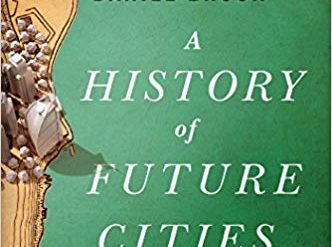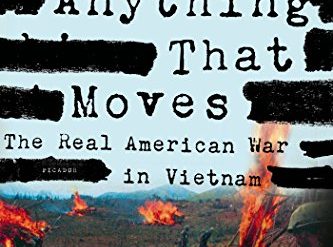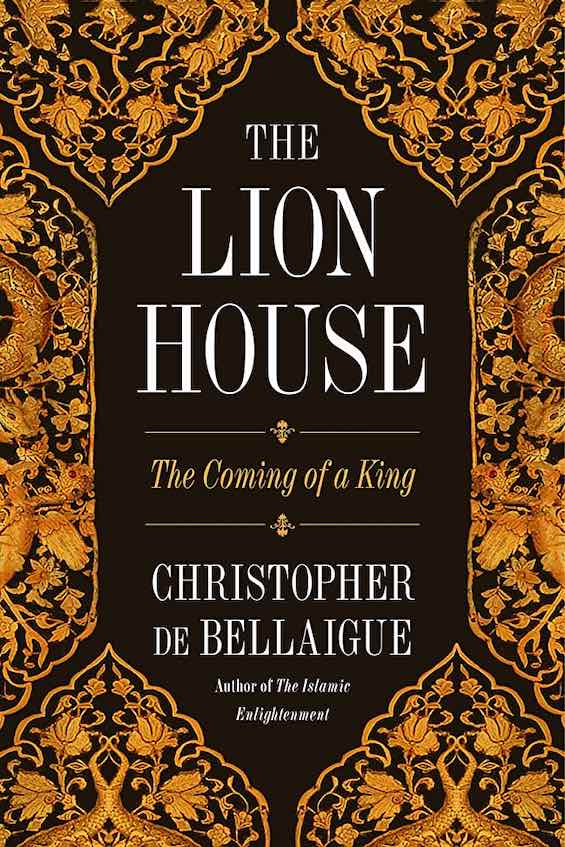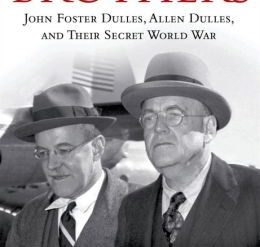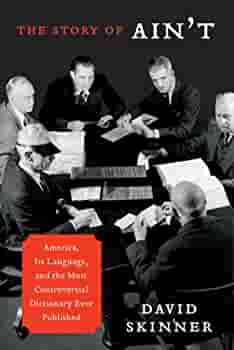
Words, words, words. How else might we perceive the reality we live in, much less convey what we see, think, or feel to another? Unfortunately, as the seventeenth century English philosopher John Locke once wrote, “So difficult it is to show the various meanings and imperfections of words when we have nothing else but words to do it with.” Which presents us with a quandary, of course. Because where do we turn to dig ourselves out? To books called dictionaries—filled with words. And, to search for their deeper meaning, to libraries, containing endless numbers of words. Which may leave us still further buried in our conundrum if the language itself is impenetrable. Still, what choice have we got? And to understand what’s going on here, I recommend dipping into the following list of books about dictionaries, libraries, and language.
Estimated reading time: 17 minutes
Books about dictionaries
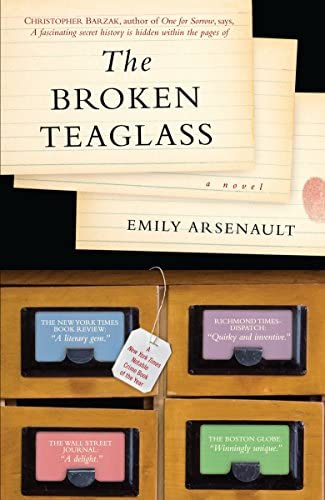
The Broken Teaglass by Emily Arsenault (2009) 384 pages ★★★★☆ – A refreshingly offbeat novel about creating a dictionary
Just out of college, Billy takes a job as a lexicographer with a New England dictionary publisher and improbably finds himself caught up in a peculiar murder mystery. Working with another young recent hire, Mona, Billy slowly uncovers a series of clues left behind in the company’s “cit files” where citations of word usage are stored in anticipation of future editions. The clues come out helter-skelter and mystifying in the form of citations themselves from a book called The Broken Teaglass, all squirreled away in fastidiously alphabetical order in the files.
As the mystery unfolds in all its complexity in this refreshingly offbeat novel, Billy gradually becomes acquainted with the eccentrics who staff the company, a series of encounters I found delightful. Most enjoyable — hilarious, really — are the letters and conversations with the confused, the cranks, and the convicts who contact the company to question one definition or another. Meanwhile, Billy’s own troubled past slowly becomes clear, and he unravels in the course of coming to terms with it.
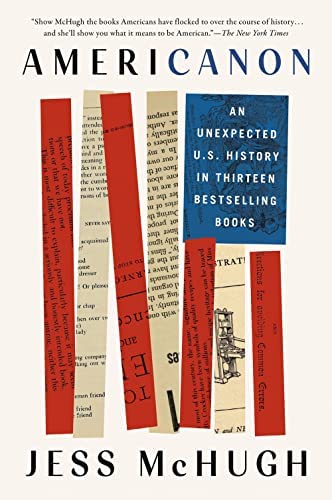
Americanon: An Unexpected U.S. History in Thirteen Bestselling Books by Jess McHugh (2021) 432 pages ★★★★★ – The bestsellers that shaped the American character
You’re certain to have come across at least one of the thirteen books highlighted in Americanon.In fact, you may well have read several of them, and few if any will be unfamiliar. From The Old Farmer’s Almanac (1792) and Webster’s Dictionary (1828) to How to Win Friends and Influence People (1936) and The 7 Habits of Highly Effective People(1989), McHugh has selected “nonfiction how-to books that have consistently sold the most and influenced the greatest number of people throughout history.” In short, these bestsellers helped define American values.
An academic scholar of cultural history might approach this subject from a different perspective. Noting the context. Summarizing the substance. And assessing the impact of these books. Author Jess McHugh covers all that territory but goes further than academics are wont to go. She reveals the subtext as well. “These how-to books taught people certain skills,” she writes, “all while delivering messages about American beliefs, encoding everything from individualism and self-reliance to meritocracy and personal freedom.”
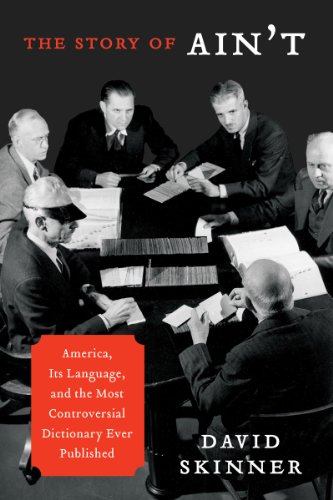
The Story of Ain’t: America, Its Language, and the Most Controversial Dictionary Ever Published by David Skinner (2012) 370 pages ★★★★★ – The famous dictionary that threw out the rules of grammar
My mother went ballistic when Webster’s Third New International Dictionary of the English Language appeared in 1961. She’d taught English for a time during the Depression. Then, there was a right way and a wrong way to express yourself. Rules were rules—and English teachers knew exactly what they were. But even back then the linguists had arrived on the scene with the peculiar notion that the ways people actually spoke the language more accurately reflected what was “right” than the rules of grammar and word usage as laid down in classrooms like my mother’s. And that was the perspective that guided the preparation of Webster’s Third, as David Skinner relates so entertainingly in The Story of Ain’t.
In fact, by 1961, that same accepting approach had already come to be adopted among many English teachers. The new “progressive” or “permissive” ethos had long since surfaced in Dr. Benjamin Spock‘s The Common Sense Book of Baby and Child Care, first published in 1946. And that was only the beginning of civilization’s downfall, as so many warned. Progressive education was identified in the USA with the work of John Dewey in the 1930s, and my mother . . . Did. Not. Like. It. At. All. Disturbingly, the editors of the new Webster’s Third had treated that approach as gospel.
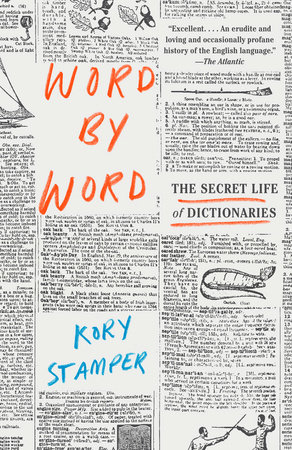
Word by Word: The Secret Life of Dictionaries by Kory Stamper (2017) 296 pages ★★★★★ – A very funny book about words, grammar, and dictionaries
When you think of dictionaries, chances are good the ones that would come to mind are the Merriam-Webster Collegiate and the Oxford English Dictionary (as well as whatever comes up online). Did I get that right? Certainly, those are the two most commonly consulted by educated American readers. If you’re a curious sort, you might wonder how all the words and definitions find their way into the pages of those dictionaries. Well, wonder no more! The lexicographer Kory Stamper of Merriam-Webster, Inc., has written Word by Word, a delightfully profane and often hilarious book about grammar. It’s an account of how she and her colleagues work to update their dictionaries, not just the Collegiate but the online Merriam-Webster Unabridged as well (the successor to the infamous old Webster’s Third New International Dictionary).
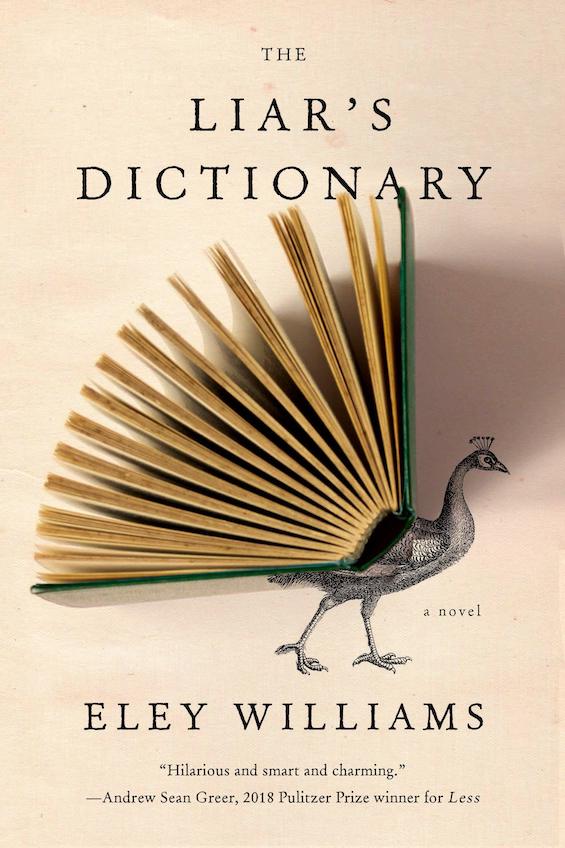
The Liar’s Dictionary by Elly Williams (2019) 288 pages ★★★★★ – A hilarious novel about a dictionary
No serious student of English language or literature can live long without the Oxford English Dictionary. The twenty-volume second edition, published in 1989, contains 290,000 main entries on 21,728 pages. (A third, bigger and more up-to-date edition is now in progress online.) Since 1857, when a small group of English intellectuals set out to compile a list of words that were unlisted or poorly defined in current dictionaries, legions of lexicographers have labored to produce the OED. The dictionary represents one of the most monumental undertakings in cultural history. Its aim is nothing less than to identify, define, and pinpoint the historical origins of every word that has ever been widely used in the English language. Every other English-language dictionary pales beside the venerable OED. And that is certainly the case of the fictional Swansby’s New Encyclopaedic Dictionary, the centerpiece of Eley Williams’s delightful comic novel, The Liar’s Dictionary.
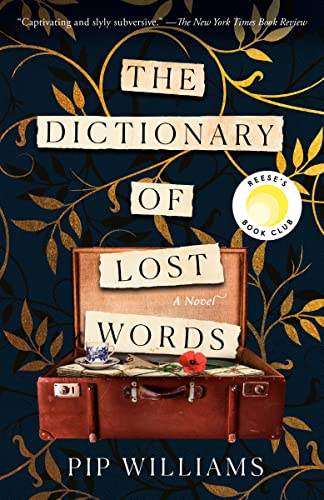
The Dictionary of Lost Words by Pip Williams (2021) 400 pages ★★★★★ – A moving novel about the making of the OED
One of the most spectacular intellectual achievements of recent centuries was the creation of the Oxford English Dictionary. The dictionary began in 1857 as a project of Britain’s Philological Society. But it was only in 1884, under the direction of Scottish lexicographer James Murray, when the first unbound fascicles were published. A team of specialists, along with scores of volunteers, continued work until the publication of the dictionary’s tenth and final volume in 1928. Murray himself was long dead. Known universally among scholars as the OED, the dictionary has become one of the principal tools through which we understand the evolution of the English language.
Pip Williams’ moving novel concerns the creation of that first edition, as seen through the eyes of a young woman who was deeply involved in the project. It’s a moving story of a bright and talented person shackled by the misogynist conventions in the era of the suffragettes.
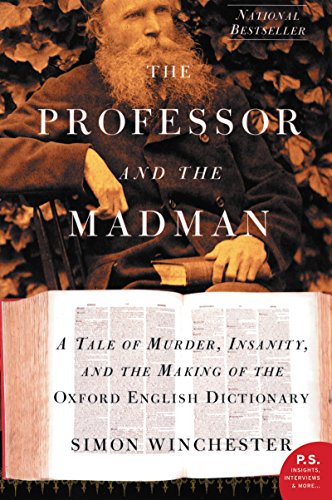
The Professor and the Madman: A Tale of Murder, Insanity, and the Making of the Oxford English Dictionary by Simon Winchester (1998) 242 pages ★★★★★ – How a lunatic helped create the world’s most important dictionary
When the idea surfaced in 1857, scholars thought it was impossible. A comprehensive, historical dictionary of the English language encompassing every word ever repeatedly used in print for a thousand years? Nonsense! It would take years for a team of hundreds of lexicographers to make even a dent in such a task! Yet somehow it came about—after seven decades of monumental effort. The Oxford English Dictionary appeared in 1928—twenty volumes containing 400,000 defined words and 1.8 million illustrative quotations. Thousands of people were ultimately involved in its creation. But few played such pivotal roles as the two remarkable men profiled in Simon Winchester’s engaging, offbeat story about the creation of the world’s most important dictionary, The Professor and the Madman: the legendary Dr. James Murray, editor of the first edition, and his volunteer collaborator, Dr. W. C. Minor.
Books about libraries

Library: An Unquiet History by Matthew Battles (2011) 256 pages ★★★★☆ – An impressionistic history of libraries and librarians through the ages
I have no idea what an “unquiet” history might be as promised in this book’s subtitle. But if you’ve picked up a copy of Library in hopes of reading a history of libraries through the ages, you’ll be disappointed. For example, although author Matthew Battles is American, he has not seen fit to mention the name Andrew Carnegie anywhere in his book. It’s hard to imagine the history of libraries in this country without acknowledging the more than 2,500 public libraries the steel magnate built with his ill-gotten gains as a predatory capitalist. The book is more accurately described as a pastiche of one librarian’s reflections on books, libraries, and librarians and the varied roles they’ve played since the first clay tablets were collected in a single place for later reference.
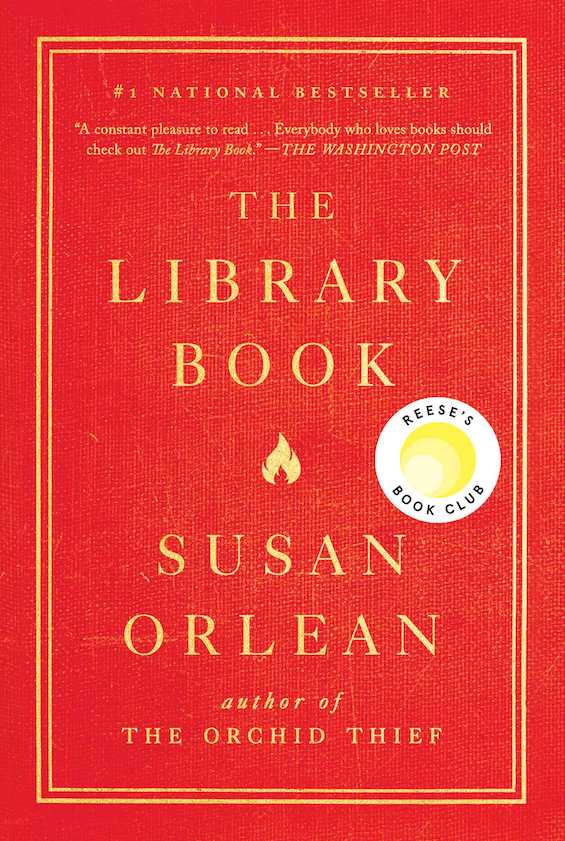
The Library Book by Susan Orlean (2018) 310 pages ★★★★★ – An arson fire, the growing role of libraries, and eccentric librarians
How good is The Library Book? It’s unquestionably one of the most enjoyable books I’ve read in recent years. Susan Orlean has a magical way with prose, and she turns what could easily be a monumentally boring subject into a captivating tale. Even if you’re not a passionate devotee of public libraries, you’ll be enchanted by this beautifully researched history of the Los Angeles Public Library, the eccentric librarians who have sometimes run it—and the fire that nearly destroyed it more than thirty years ago.
Books about language, grammar, and codes
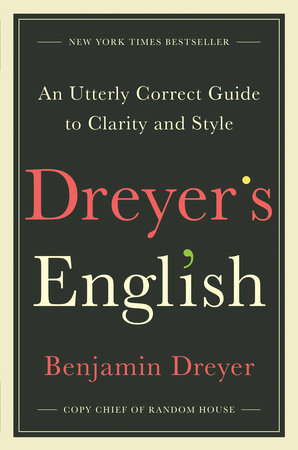
Dreyer’s English: An Utterly Correct Guide to Clarity and Style by Benjamin Dreyer (2019) 304 pages ★★★★★ – A top copyeditor explains how to write clear English
Chances are you’re convinced you know perfectly well how to write clear and grammatically correct English. But, just to be sure, take this quick quiz: How many of these rules do you follow when you write?
- Never begin a sentence with “and” or “but.”
- Never split an infinitive.
- Never end a sentence with a preposition.
- Contractions aren’t allowed in formal writing.
- The passive voice is to be avoided.
- Sentence fragments are bad.
- A person must be a “who,” not a “that.”
- “None” is singular and, dammit, only singular.
- “Whether” must never be accompanied by “or not.”
- Never introduce a list with “like.”
If you learned English many years ago, as I did, chances are you heed at least some of these ten rules. It took me decades of reading and writing to unlearn them (and I still have trouble with Numbers 2, 5, and 8). So, if you really want to know how to write clear English, I strongly recommend you read Benjamin Dreyer‘s superb new book, Dreyer’s English, and take his rebuttal of all these rules to heart. The man makes sense.
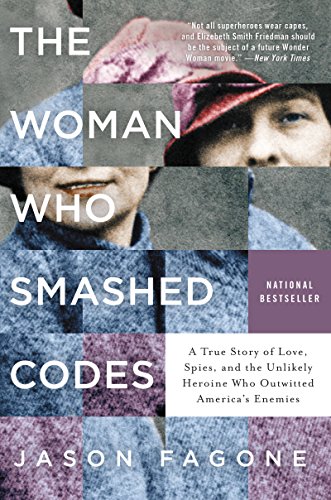
The Woman Who Smashed Codes: A True Story of Love, Spies, and the Unlikely Heroine Who Outwitted America’s Enemies by Jason Fagone (2017) 464 pages ★★★★★ – The woman codebreaker who caught gangsters and Nazi spies
There are few areas in which the unavailability of documentary evidence has been more telling than in the history of espionage in the 20th century. Only in recent years have the archives of the CIA, the KGB, MI6, the NSA, and other leading intelligence agencies opened widely enough for us to understand what really took place in the world of espionage in World War II and the Cold War. (Doubtless, some explosive documents are still locked away and won’t surface until later in this century, if ever.) And there is no more dramatic example of how what has passed for history has misled us than what we have been taught about the FBI’s role in counterespionage in the 1920s and 30s (combating rumrunners and smugglers) and in the 1940s (catching Nazi spies).
Working with recently declassified files from the World War II era as well as long-ignored archival records and contemporary press reports and interviews, journalist Jason Fagone has brought to light at last the astonishing story of Elizebeth Smith Friedman and her husband, William Friedman. (Yes, her first name is spelled with three e’s.) As Fagone shows in his beautifully written story of this surpassingly brilliant couple, The Woman Who Smashed Codes: A True Story of Love, Spies, and the Unlikely Heroine Who Outwitted America’s Enemies, the Friedmans may well have been the most important 20th-century American codebreakers, and quite possibly the best and most successful in the world.
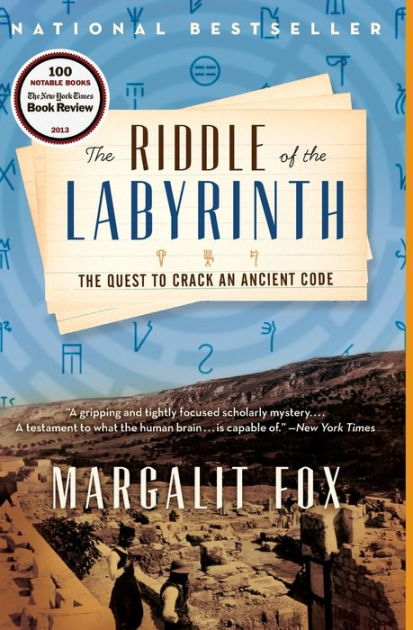
The Riddle of the Labyrinth: The Quest to Crack an Ancient Code by Margalit Fox (2013) 385 pages ★★★★★ – “The Quest to Crack an Ancient Code”
You might think that an historical account about scholars exploring an intellectual challenge would be deadly dull. In most cases, that’s likely to be true. But Margalit Fox’s tale in The Riddle of the Labyrinth is anything but that. As the subtitle hints, “The Quest to Crack an Ancient Code” is as lively and engaging as any book about the cryptographers who tackled the German Enigma and Japanese Purple codes in World War II. By telling her story through the lens of the three fascinating individuals who are most closely identified with cracking the legendary Linear B code, Fox squarely centers her account on the all-too-human frailties that loomed so large in the tale.
Linear B was the name assigned to the mysterious symbols uncovered in 1900 on a vast storehouse of clay tablets on the island of Crete. The tablets came to light at the site of the ancient city of Knossos, a sprawling building “larger than Buckingham Palace” that was dubbed the Palace of Minos after the mythical Mycenaean king. Another, smaller stash of tablets was uncovered much later on the Greek mainland at Pylos bearing slightly different symbols. But none of those symbols matched anything known to archaeologists, ancient historians, or linguists. Half a century was to pass before scholars deciphered their meaning and conclusively identified the language in which they were written.

The Secret War: Spies, Ciphers, and Guerrillas, 1939-1945 by Max Hastings (2016) 645 pages ★★★★★ – A revisionist history of intelligence in World War II
Shelves-full of history books have been written about the triumphs of Allied intelligence in World War II. The Ultra Secret. The Man Who Never Was. Operation Mincemeat. Agent Zigag. Double Cross. A Man Called Intrepid. I’ve read all these and many more. (There are hundreds, maybe thousands.) Now comes British journalist and historian Max Hastings with a revisionist view in The Secret War. With his eyes focused on the harsh realities of that all-consuming conflict, Hastings debunks the myths that inspired these books and takes their exaggerations down a peg with a long-lacking sense of perspective. The effect is sobering. This is revisionist history at its best. Anyone who seeks to understand how World War II was really waged should read this book without delay.
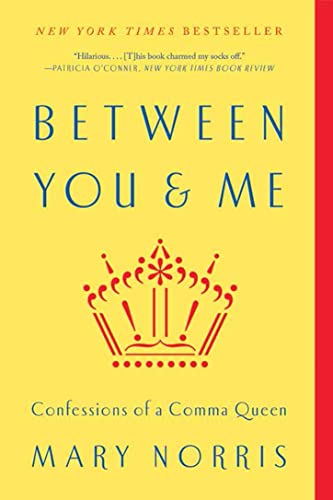
Between You and Me: Confessions of a Comma Queen by Mary Norris (2015) 240 pages A peek inside the editorial process at The New Yorker
Once upon a time, in the dim recesses of the twentieth century, I learned the rules of spelling and grammar from my mother (a former English teacher) and a succession of prim ladies in the public school system of Lima, Ohio. It was all cut and dried, as rules tend to be. Rules were rules. There was only one right way to do things, and every other way was wrong. Now here comes Mary Norris, a longtime copy editor at The New Yorker, of all places, to tell me that editors like her argue all the time about punctuation, spelling, and grammar. Good grief! What is the world coming to? Is the editorial process at The New Yorker as messy as work in any other office? Is terra firma no longer firma? Can the process of writing good copy be no more tolerable than the making of sausages or laws?
Apparently not. In the final analysis, Norris recommends that you “follow some rules, sure, but in the end what you’re after is clarity of meaning.” She serves up this advice in the course of a memoir, of sorts, about her long experience at a magazine that is often thought to feature the best writing that America has to offer.
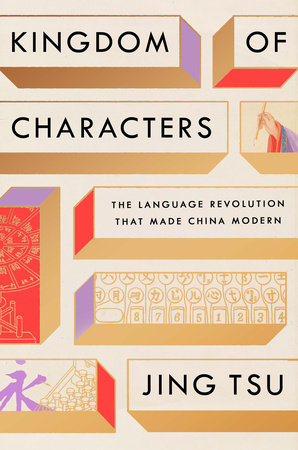
Kingdom of Characters: The Language Revolution that Made China Modern by Jing Tsu (2022) 337 pages ★★★★☆ – How China learned to communicate with the world
Learning to read Chinese can be a monumental challenge for almost anyone—including the Chinese. There is no alphabet. In fact, there is really no single language called Chinese, which is a family of languages and dialects, many of which are mutually unintelligible.
Written Chinese is, for the most part, the same across all languages and dialects that outsiders might call Chinese. But pronunciation varies widely and sometimes meaning as well. Even within a given dialect, a single character may have multiple meanings. And the inventory of printed Chinese characters (ideographs) is staggeringly large. All told, there are more than 50,000 characters, and thousands more have surfaced in recent years.
How, then, could anyone not a native speaker possibly master the language? More to the point, how can anything written in Chinese be accurately translated into another language? Or converted into the 1’s and 0’s of the language of computers? In Kingdom of Characters, Yale professor Jing Tsu tells a remarkable story. It’s the tale of the brilliant men who engineered the Chinese language revolution.
For more great reading
You might check out:
- 20 top nonfiction books about history
- Science explained in 10 excellent popular books
- 30 good nonfiction books about espionage
And you can always find my most popular reviews, and the most recent ones, on the Home Page.

